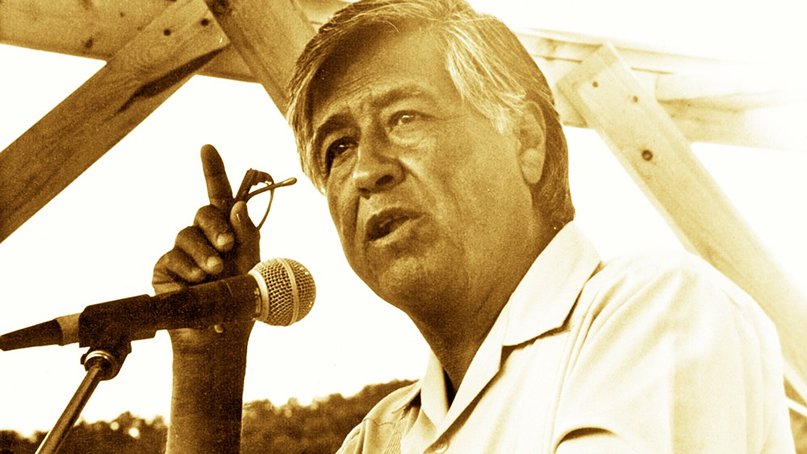Mexican-American farmer and union leader César Estrada Chávez (1927 – 1993) was a civil rights activist and union leader. According to the international non-profit organization “
United for Human Rights” Chávez “changed that when he dedicated his life to winning recognition for the rights of agricultural workers, inspiring and organizing them into the National Farm Workers Association, which later became the United Farm Workers. Through marches, strikes and boycotts, Chávez forced employers to pay adequate wages and provide other benefits and was responsible for legislation enacting the first Bill of Rights for agricultural workers. For his commitment to social justice and his lifelong dedication to bettering the lives of others, Chávez was posthumously recognized with the highest civilian honor, the Presidential Medal of Freedom”.
According to NBC News, “almost 30 years after his death, a new graphic novel wants to inspire young readers with the story of a 340-mile protest march that lifted César Chávez as a national champion for farmworkers and labor and civil rights everywhere”.
Dropped in early January as part of a series of books by Penguin Young Readers on historical figures, this Graphic Novel tells the story of the 1966 protest march led by Chávez that started from Delano, California, and continued to the State Capitol in Sacramento. This march drew national attention and led to the first employment contract for the nascent National Association of Agricultural Workers, founded by Chávez and other labor leaders. The union later merged and eventually became the United Farm Workers union, according to the publication.
The report informs that the Graphic Novel illustrations were made by Mar Julia “who's been nominated for a prestigious Ignatz Award, which recognizes achievement in cartooning”.
The Associated Press reported that during this period migrant farm workers carried sleeping bags and paper bags with clothes. They had neither food nor shelter, and they relied on the hospitality of other migrant workers along the way. Protesters marched with an embroidered silk tapestry of Our Lady of Guadalupe, the patron saint of Mexico.
“The 25-day march, which was described as a pilgrimage, began March 17 and ended at the western plaza of the state Capitol on Easter Sunday, April 10. While many migrant workers were united by faith, they also carried a wooden sign with the word “huelga” (“strike”) engraved on it […]. Back in 1966, Chávez led grape pickers in Delano on a strike for higher wages. They demanded an increase in hourly wages from $1.20 to $1.40, and an incentive pay increase from 10 cents a box to 25 cents. For reference, the U.S. Census says the median income for American families had reached a new peak of $7,400 that same year”
According to the news, The New York Times found in an obituary in the year of his death that he “was widely acknowledged to have done more to improve the lot of the migrant farm worker than anyone else”
 unidospelosdireitoshumanos.org.br
unidospelosdireitoshumanos.org.br











